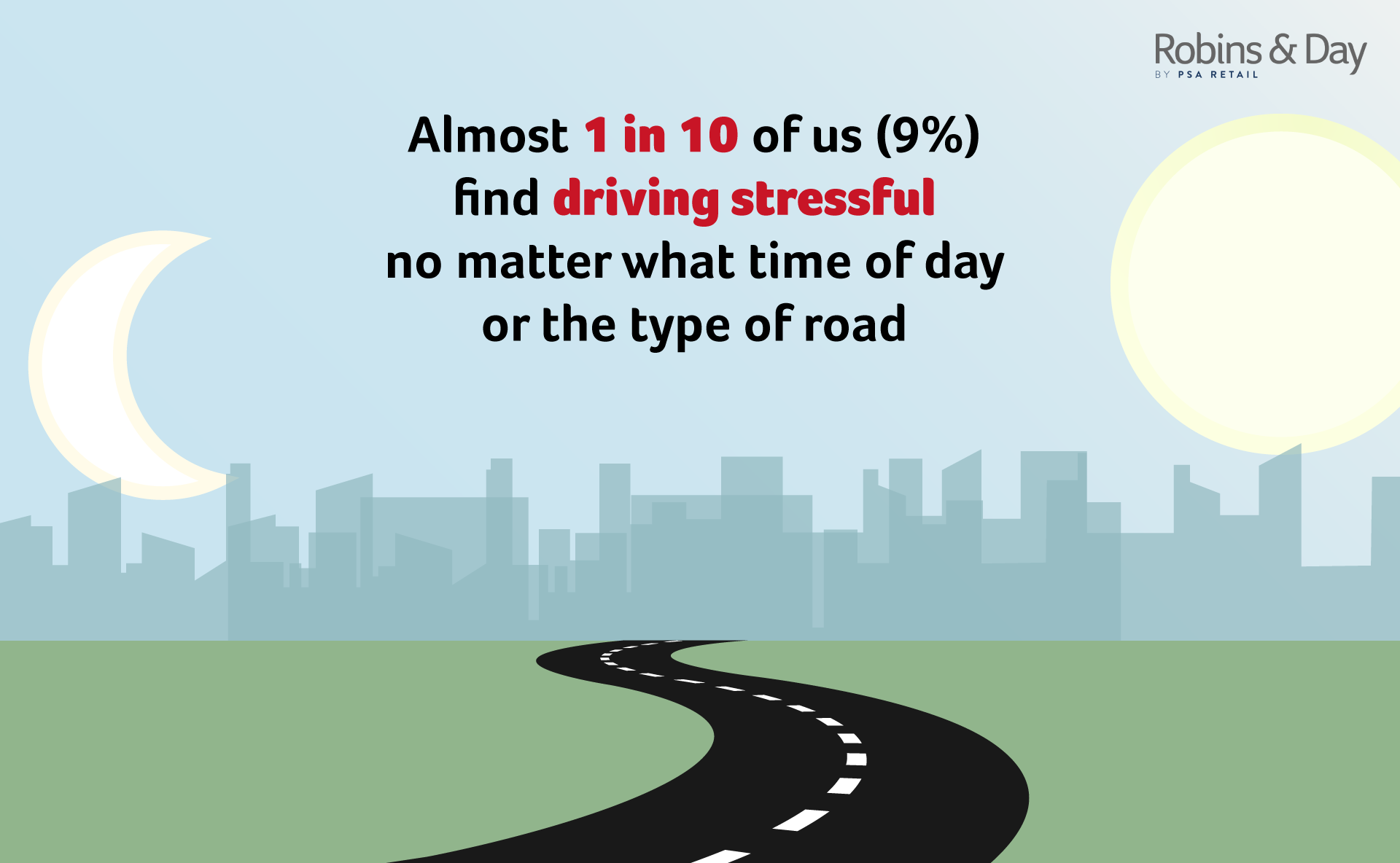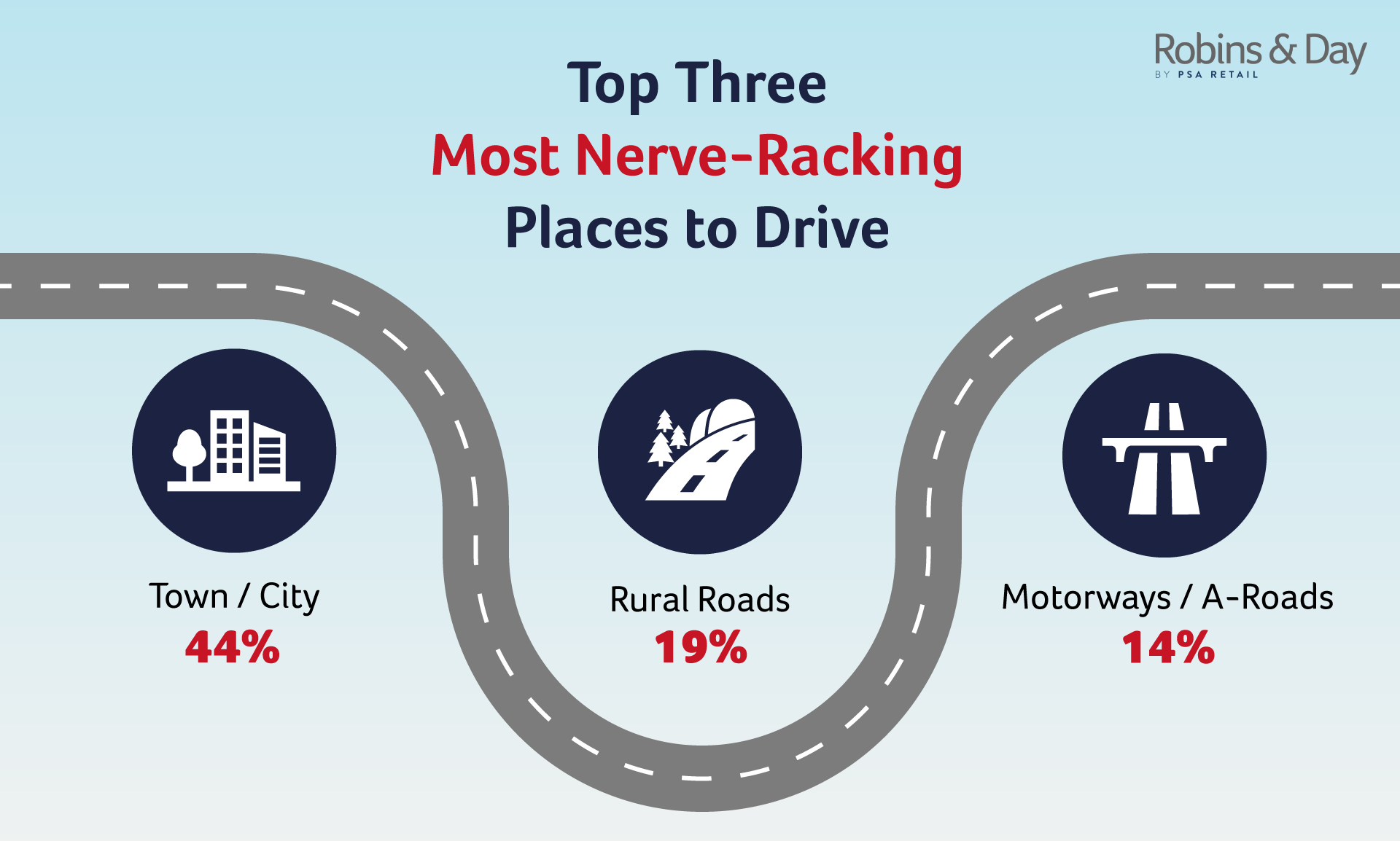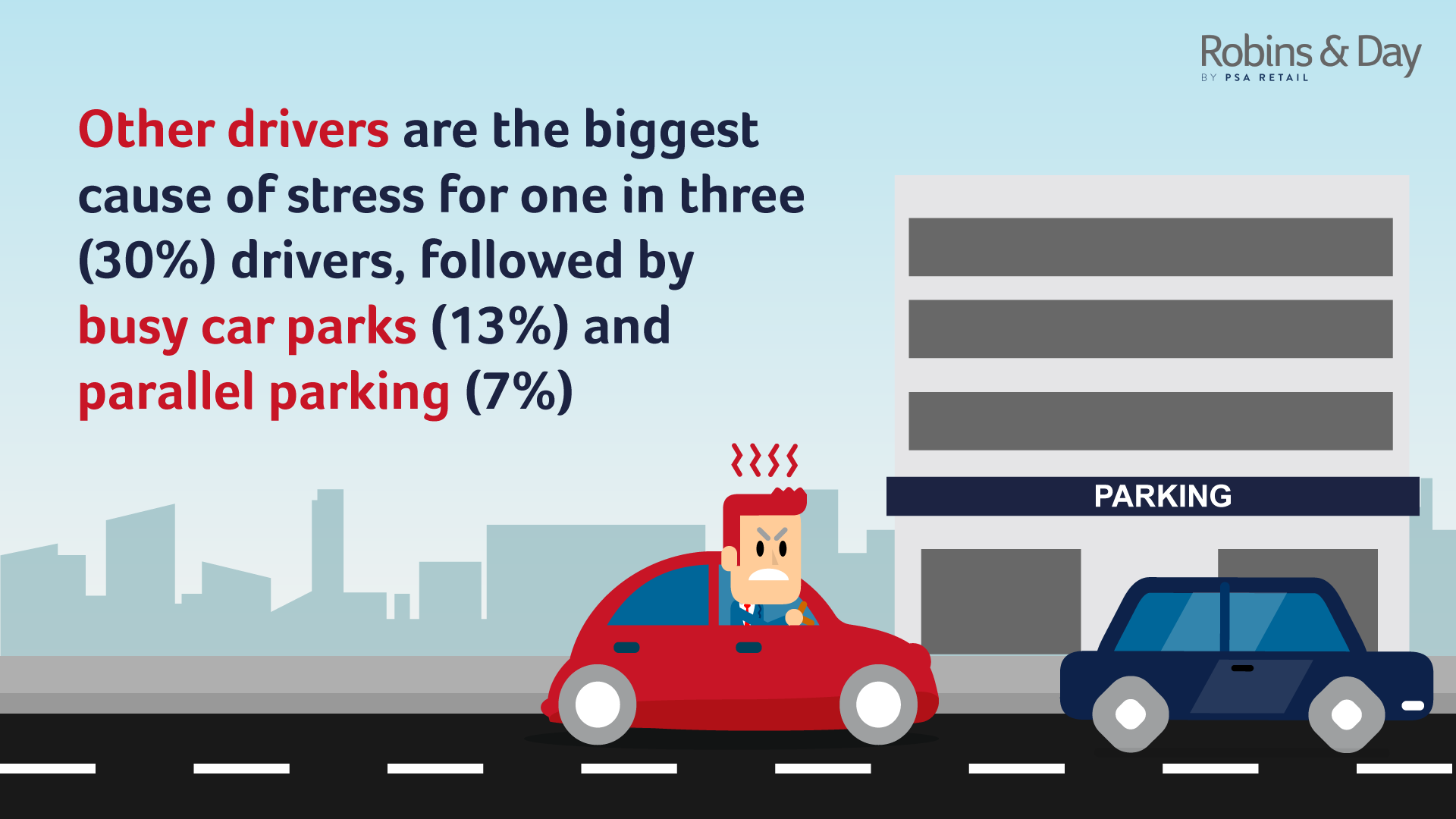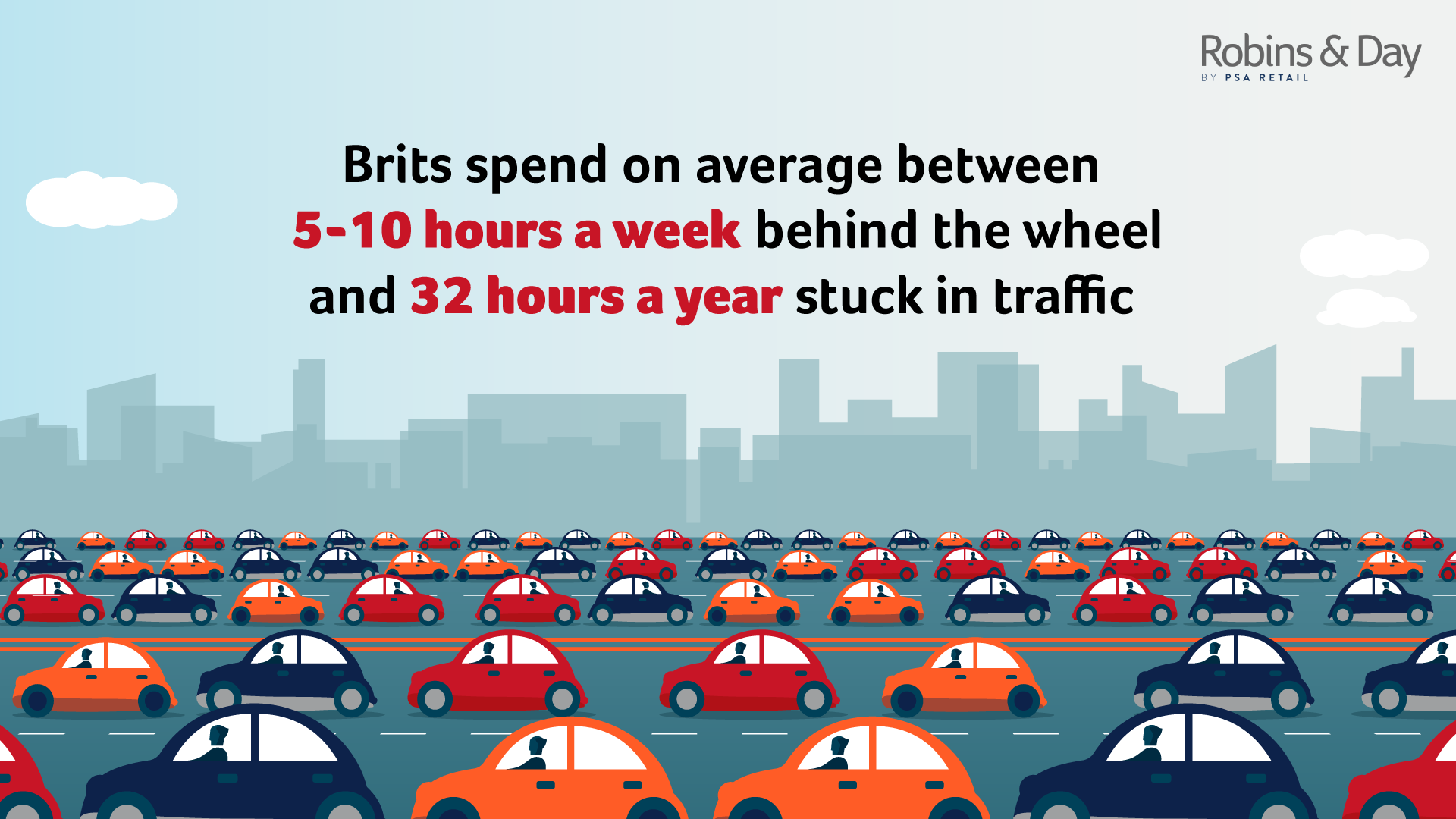Afternoons and A Roads: Factors that Make Driving Stressful
Whether for leisure, commuting or completing the school run, millions of Brits hit the road each day. But with 4 in 10 of us finding the late afternoon the most stressful time to drive, sitting behind the wheel is not always the enjoyable experience we would envision.
Here at Robins and Day, we decided to ask British motorists about their most stress-inducing factors, times of day and more when on the road. Want to know where your driving gripes rank? Here’s what our respondents said…
From AM to PM
Depending on when you do most of your driving, there may be a particular time of day that causes you the most stress. For 44% of the Brits we asked, the queues and traffic that build during the late afternoon and early evening period (between 5pm and 7pm) lead to the most tension.
In second place is the morning, specifically from 7am to 9am, when almost a third of us (32%) feel on edge during peak congestion times. While only 1 in 10 people find it most taxing when driving during the evening between 7pm and midnight.

Types of Roads
When asked what types of roads you most regularly drive on, and which are the most stress-inducing, the results were surprising. For example, while we spend a lot of time on motorways and A roads, only 14% of Brits find them worrisome. Perhaps with the introduction of technology such as lane departure warning, cruise control and active city brake, our stress levels are reduced.
Our results highlighted that most drivers spend time on a mixture of roads (27%), followed by motorways and A roads (24%), town and city (20%), local and suburban (19%) and rural (10%).
Topping the list of the five most stressful types are town and city roads, with 4 in 10 Brits (44%) finding them irritating. This is followed by rural roads (19%), motorways and A roads (14%), local and suburban (10%), and a mixture of all (8%).

The Gender Gap
When we assess road type by gender, our results showed some very interesting trends. We found that men and women find different driving situations more stressful, in a battle of city driving versus country roads.
From the answers given, we found that men feel most tense when driving in the city. In fact, when compared to women, almost 10% more men said the queues and busy nature of these roads were a higher source of aggravation.
Meanwhile for women, city driving falls further down the list. Sitting in the number one spot, it’s the unpredictable, winding and often single-track rural roads that cause higher heart rates. This is followed closely by motorway driving.
Stressful Scenarios
In addition to times of day and roads, there are also numerous other factors that can cause tension when driving. For 13% of people, it’s busy car parks that send them into a frenzy, while in comparison, 12% of us report feeling no driving-related stress at all. For others, parallel parking (7%) and driving in the snow (5%) can induce fear. Yet, surprisingly, only 3% of us experience road rage caused by other drivers.
We also looked at the most anxiety-inducing scenarios for new drivers by taking biometric data from a 22-year-old male learner driver. Looking at heart rate, we found that overtaking caused the most extreme response with 150 beats per minute (bmp), followed by roundabouts (143bpm) and busy car parks (139bmp).

The UK’s Most Maddening Roads
As well as analysing road types, we also asked respondents for their most stressful roads, roundabouts and junctions across the UK. The top five that received the most complaints comprise of the Magic Roundabout in Swindon, the Kirkstone Pass and Hardknott Pass (both in Cumbria), the one-way city-centre system in Leeds, and the M8 in Glasgow.
With so many drivers on the road, lots of queues and more, we’re bound to experience a little stress behind the wheel from time to time. However, being aware of your triggers and the times you travel could help you to alleviate your driving tension.


 Find us
Find us
 Contact Us
Contact Us


 My account
My account













